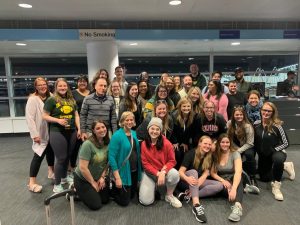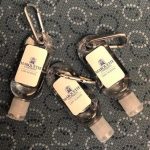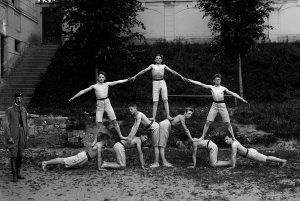Ireland Reflections 2020 — Famine and Emigration
At the end of our first day in Dublin, we spent some time learning about the impact of the potato famine on Ireland and on the world. We visited the Jeanie Johnston, an authentic replica of a transport ship commonly used during the Great Famine/Great Hunger that is docked in Dublin and serves as a memorial to those who lost their lives in their voyages to North America.
3L student Hayden Knight remarked, “The conditions were a bit jarring, but what affected me more was the knowledge that traveling the original Jeanie Johnston was actually a carefully designed operation and the conditions were far better than on most’coffin ships’ of the time. Touring the ship impressed upon me the sheer will and desperation of the Irish people to find a better life, even if that meant sailing across the ocean and being worked to the bone upon arrival to pay for the journey.”
Let me note that the Jeanie Johnston was also the site of one of the funniest moments of the trip. In the ship, they have mannequins on the bunks and at the table to simulate how crowded it was. Our wonderful colleague Nadelle Grossman tried to include one of the mannequins in the conversation by handing him a piece of paper to read–we were all so tired and bleary-eyed–but it was just the pick up that the students needed! They laughed all day about it.
The day ended with a visit to the EPIC museum. This museum blew me out of the water the first time I saw it several years ago. As opposed to most local history museums which celebrate the heritage of those who live in an area, this museum celebrates the departure of the Irish for the rest of the world. It talks first about why that has happened over the years–so it’s a good review of Irish history–and then focuses on the impact of the Irish around the world–in politics, art, music, literature, and science. Micaela Haggenjos describes the tour as “an interactive museum that gave us a look at a broad overview of Irish culture, particularly through the eyes of Irish emigrants.” Hayden added, “The museum was brilliantly designed and had some of really intriguing and interactive exhibits that walked us from the period of the Great Famine/Hunger through to current day.”
I also wanted to include a picture of the Samuel Beckett (aka Harp) Bridge in Dublin–if you’ve seen the Milwaukee Art Museum, you will recognize the architect–Santiago Calatrava. Just beautiful!

 Interior of the museum
Interior of the museum


